
Boraginaceae, the borage or forget-me-notfamily, includes about 2,000 species of shrubs, trees, and herbs in 146 to 154 genera with a worldwide distribution.

Calliandra is a genus of flowering plants in the pea family, Fabaceae, in the mimosoid clade of the subfamily Caesalpinioideae. It contains about 140 species that are native to tropical and subtropical regions of the Americas.

Plagiobothrys is a genus of flowering plants known commonly as popcorn flowers. These are small herbaceous plants which bear tiny white or yellow flowers. Their fruits are nutlets. Although these plants are found predominantly in North America and South America, five species are known from Australia. Of the approximately 65 species described, more than 15 are endemic to California.

Johnstonella angustifolia is a species of wildflower in the borage family known by several common names, including Panamint catseye and bristlelobe cryptantha. This plant is native to northern Mexico and the southwestern United States from California to Texas, where it grows in desert scrub and woodland.

Johnstonella micromeres is a species of flowering plant in the family Boraginaceae known by the common name pygmyflower cryptantha.

Greeneocharis circumscissa is a species of flowering plant in the borage family, known by the common name cushion cryptantha. It is native to western North America from Washington to Baja California to Colorado and it is also found in Argentina. It grows in sandy or gravelly types of habitat, from mountains to desert, below 9,500 m (31,200 ft) above sea level.
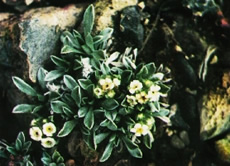
Oreocarya roosiorum is a species of flowering plant in the family Boraginaceae known by the common name bristlecone cryptantha.
Oreocarya crassipes is a rare species of flowering plant in the borage family known by the common name Terlingua Creek cat's-eye. It is endemic to Brewster County, Texas, where it is known from only ten populations totaling about 5000 plants. All of the occurrences are within a ten-kilometer radius. This is a federally listed endangered species.
This is a list of plants and how they are used in Zuni culture.
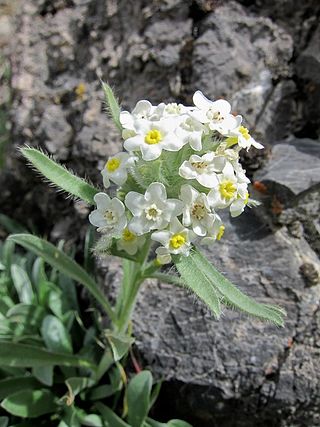
Oreocarya humilis, synonym Cryptantha humilis, is a perennial plant in the borage family (Boraginaceae), native to the western United States. It may be called low cryptantha.
Oreocarya nubigena, synonym Cryptantha nubigena, is a perennial plant in the borage family (Boraginaceae), native to western North America. It may be called the Sierra cryptantha and Sierra oreocarya.

Calyptridium is a genus of flowering plants belonging to the family Montiaceae.
Johnstonella is a genus of flowering plants belonging to the family Boraginaceae.
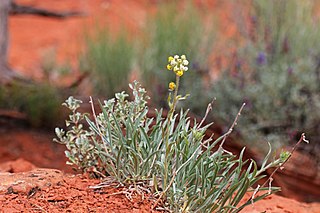
Oreocarya is a genus of flowering plants in the family Boraginaceae. There are about 63 species and its native range extends from western and central Canada, through western United States to north Mexico. It is part of subtribe of Amsinckiinae.
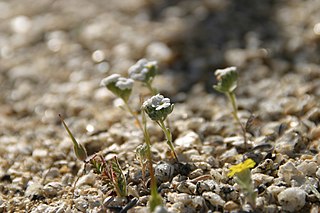
Eremocarya is a genus of flowering plants in the family Boraginaceae. There are two species and its native range extends through the western United States and Texas to northwestern Mexico. It is part of subtribe of Amsinckiinae.

Greeneocharis is a genus of flowering plants in the family Boraginaceae. There are two species, and it has a disjunct distribution in the western United States and northwestern Mexico in North America and western Argentina in southern South America. It is part of subtribe of Amsinckiinae.
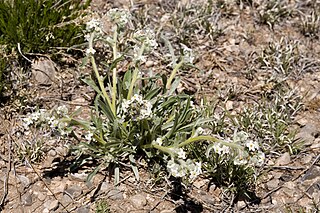
Oreocarya suffruticosa is a species of flowering plant in the family Boraginaceae, native to the west and central United States and to northern Mexico. It was first described by John Torrey in 1827 as Myosotis suffruticosa and transferred to Oreocarya by Edward Lee Greene in 1887. Varieties of Oreocarya suffruticosa have previously been placed within several species of Cryptantha, including Cryptantha cinerea, Cryptantha jamesii and Cryptantha pustulosa.

Oreocarya cana is a long-lived species of perennial plant known by the common names mountain cryptantha and mountain cat's-eye in the family Boraginaceae. It is found in the western and central United States.



















